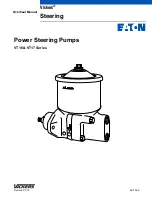
Page 50
EA Elektro-Automatik GmbH
Helmholtzstr. 31-37 • 41747 Viersen
Germany
Fon: +49 2162 / 3785-0
Fax: +49 2162 / 16230
www.elektroautomatik.de
EL 9000 B 15U/24U Series
3.5.3.2
General information about the interface modules
The master unit in the cabinet can have one of the plug-in and retrofittable modules listed in
installed. It can
take over remote control of the device alternatively to the built-in USB type B on the rear side or analog interface.
For installation see section
„2.3.9. Installation of an interface module“
The modules require little or no settings for operation and can be directly used with their default configuration. All
specific settings will be permanently stored such that, after changeover between the various models, no reconfig-
uration will be necessary.
3.5.3.3
Programming
Programming details for the interfaces, the communication protocols etc. are to be found in the documentation
“Programming Guide ModBus & SCPI“ which is supplied on the included USB stick or which is available as down-
load from the manufacturer’s website.
3.5.3.4
Interface monitoring
Interface monitoring is a configurable functionality introduced in firmwares KE 2.31 and HMI 2.20. Its goal is to
monitor (or supervise) the communication line between the device and a superior control unit, such as PC or PLC,
and to ensure that the device wouldn’t continue working uncontrolled in case the communication line fails. A failing
line can mean that it’s either physically interrupted (damaged cable, bad contact, cable pulled) or the interface port
inside the device hangs.
The monitoring is always only valid for one of the digital interfaces, the one being used for remote control. It thus
means that the monitoring can become temporarily inactive when the device leaves remote control. It’s furthermore
based on an user-definable timeout which would run out if not at least one message is sent to the device within the
given time frame. After every message, the timeout would start again and reset with the next message coming. In
case it runs out, following reaction of the device is defined:
•
Exit remote control
•
In case the DC input is switched on, either switch the DC input off or leave it on, as defined by the parameter
DC input after remote
(see
Notes for the operation:
•
The monitoring can be deactivated or activate anytime via remote control
•
The timeout of the monitoring can be changed anytime via remote control; the new value would only be valid
after the current timeout has elapsed
•
The interface monitoring
doesn’t deactivate the Ethernet connection timeout (see
), so these two timeouts
can overlap
















































